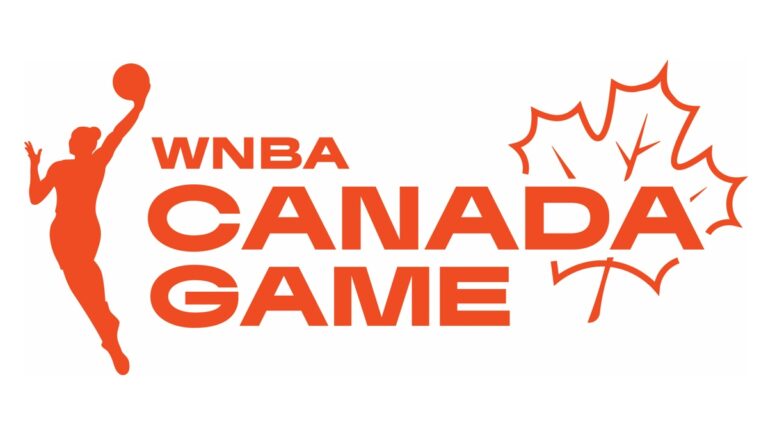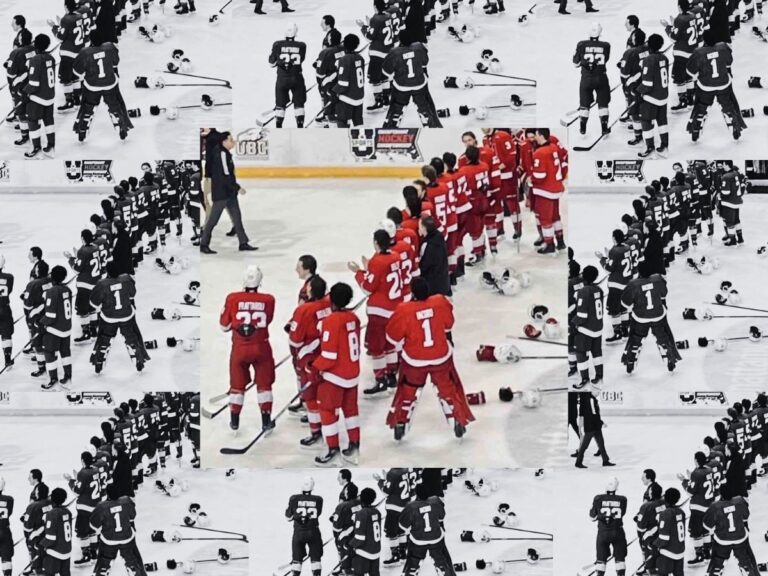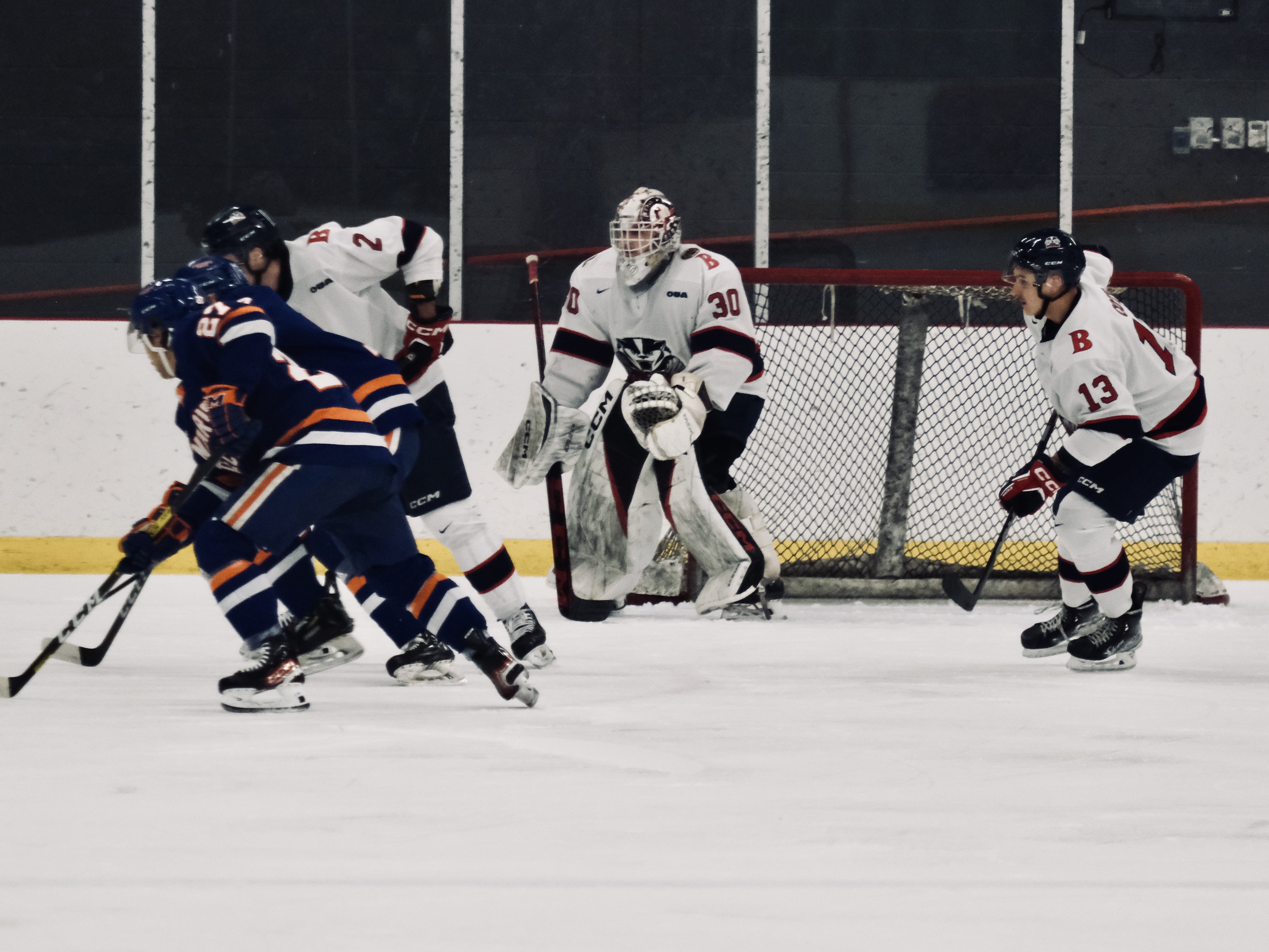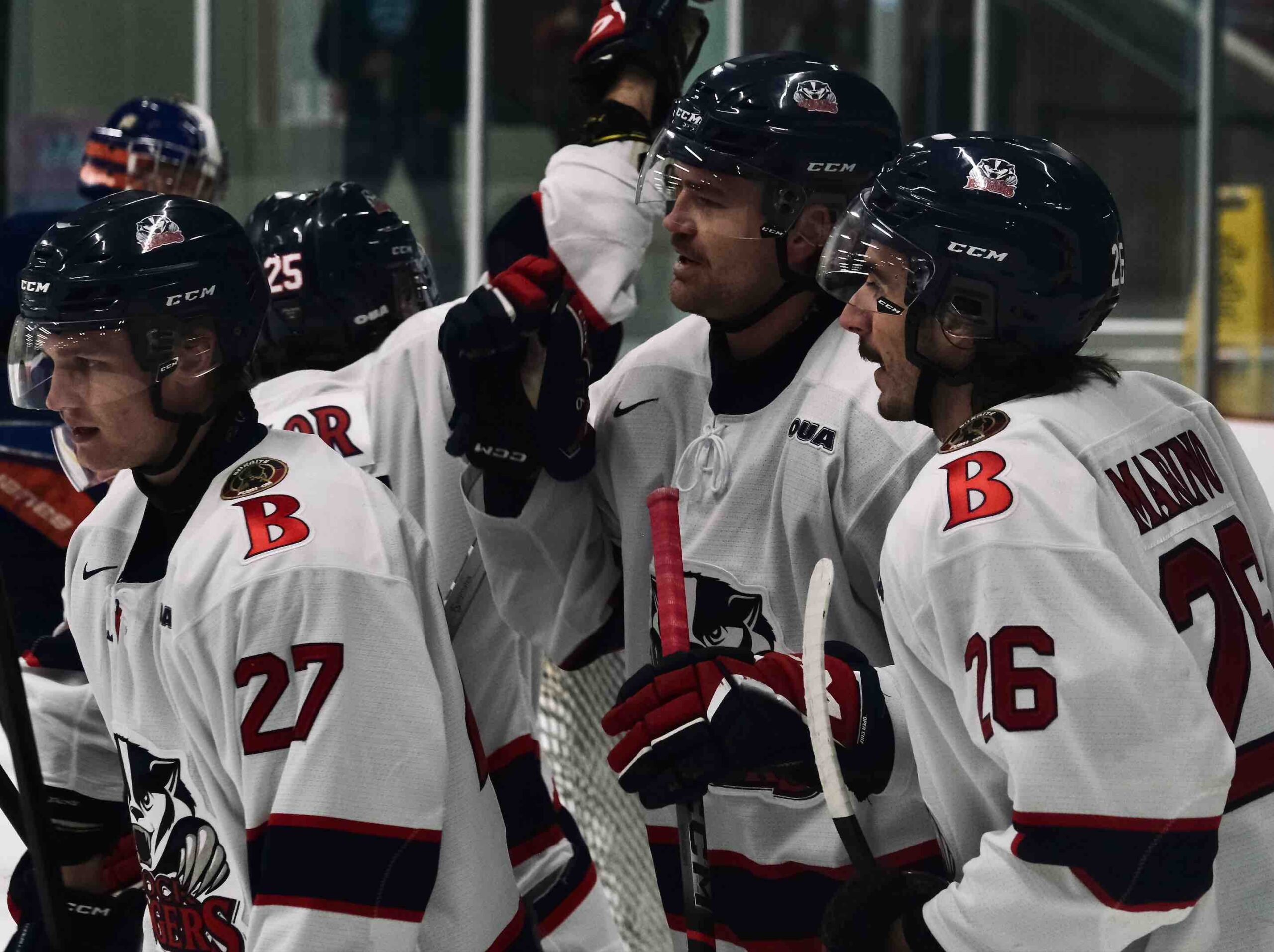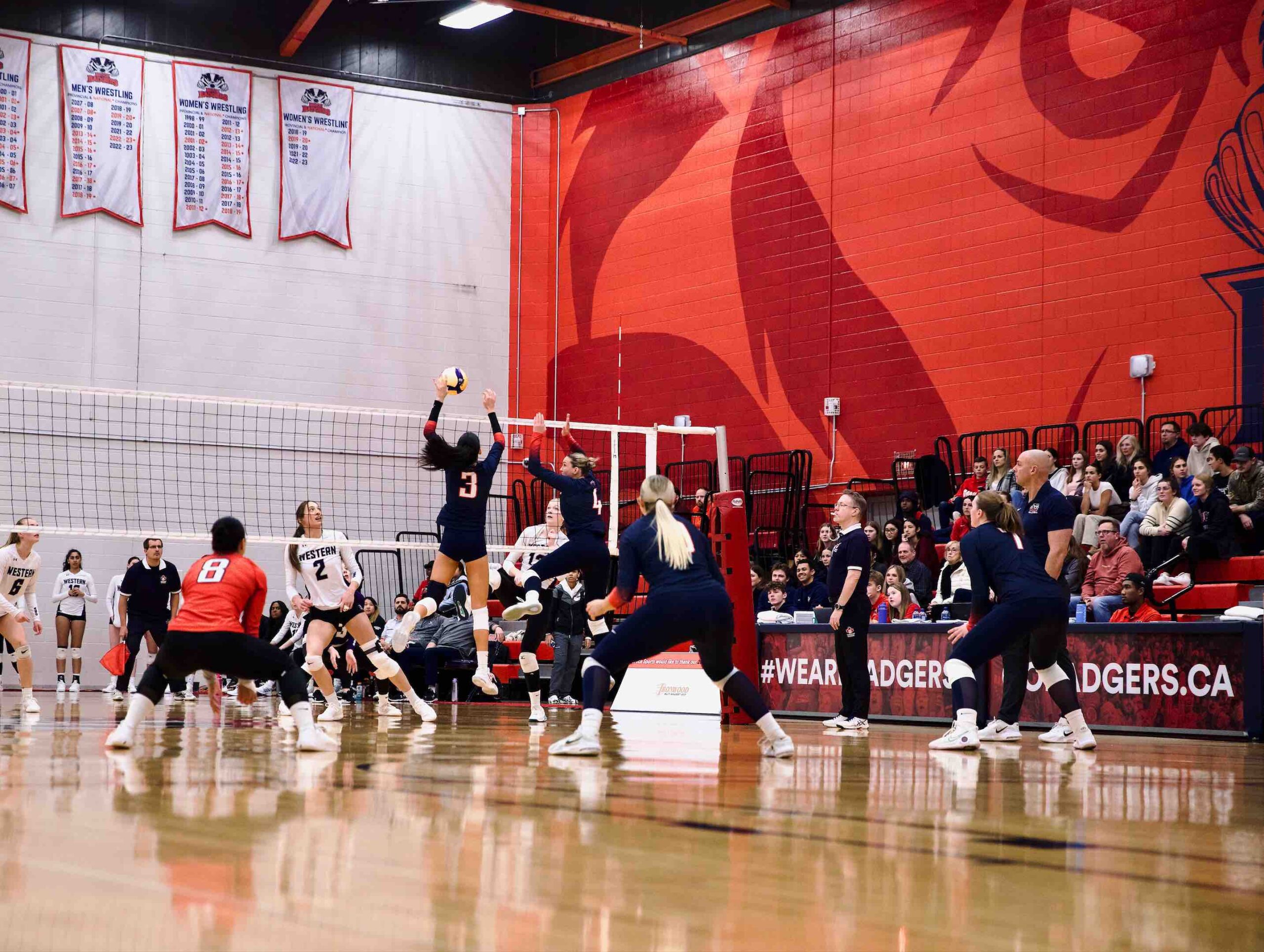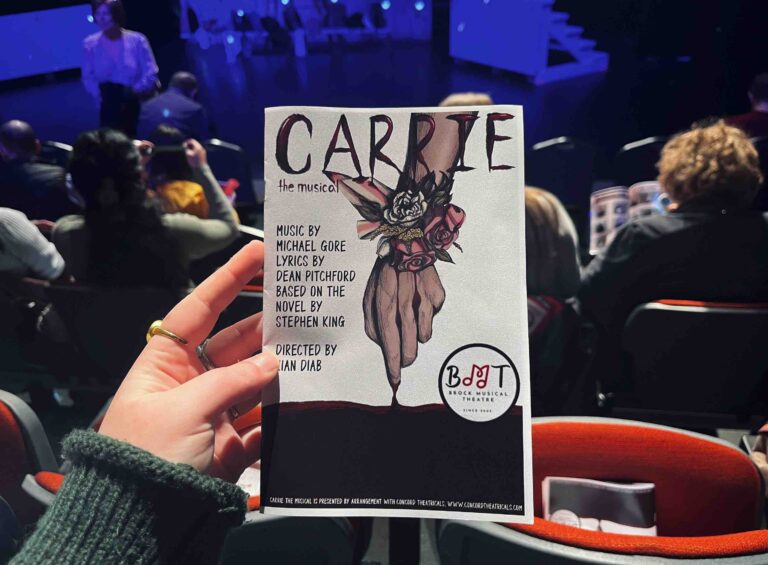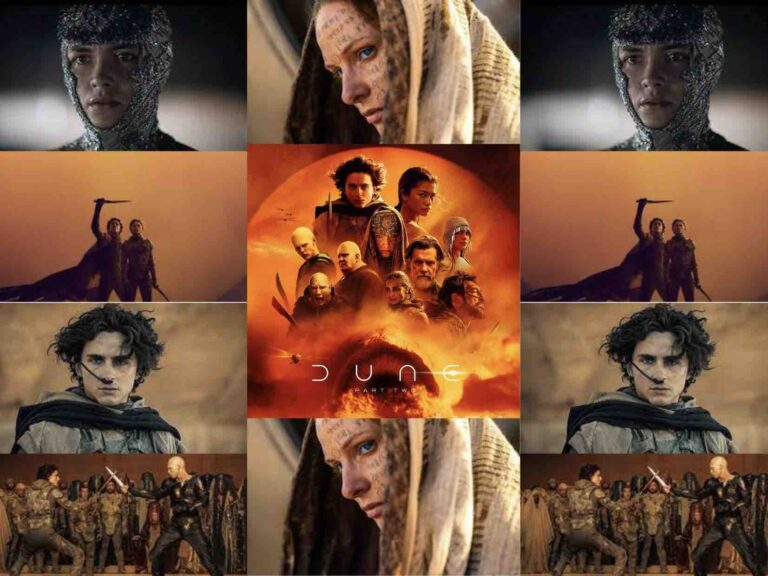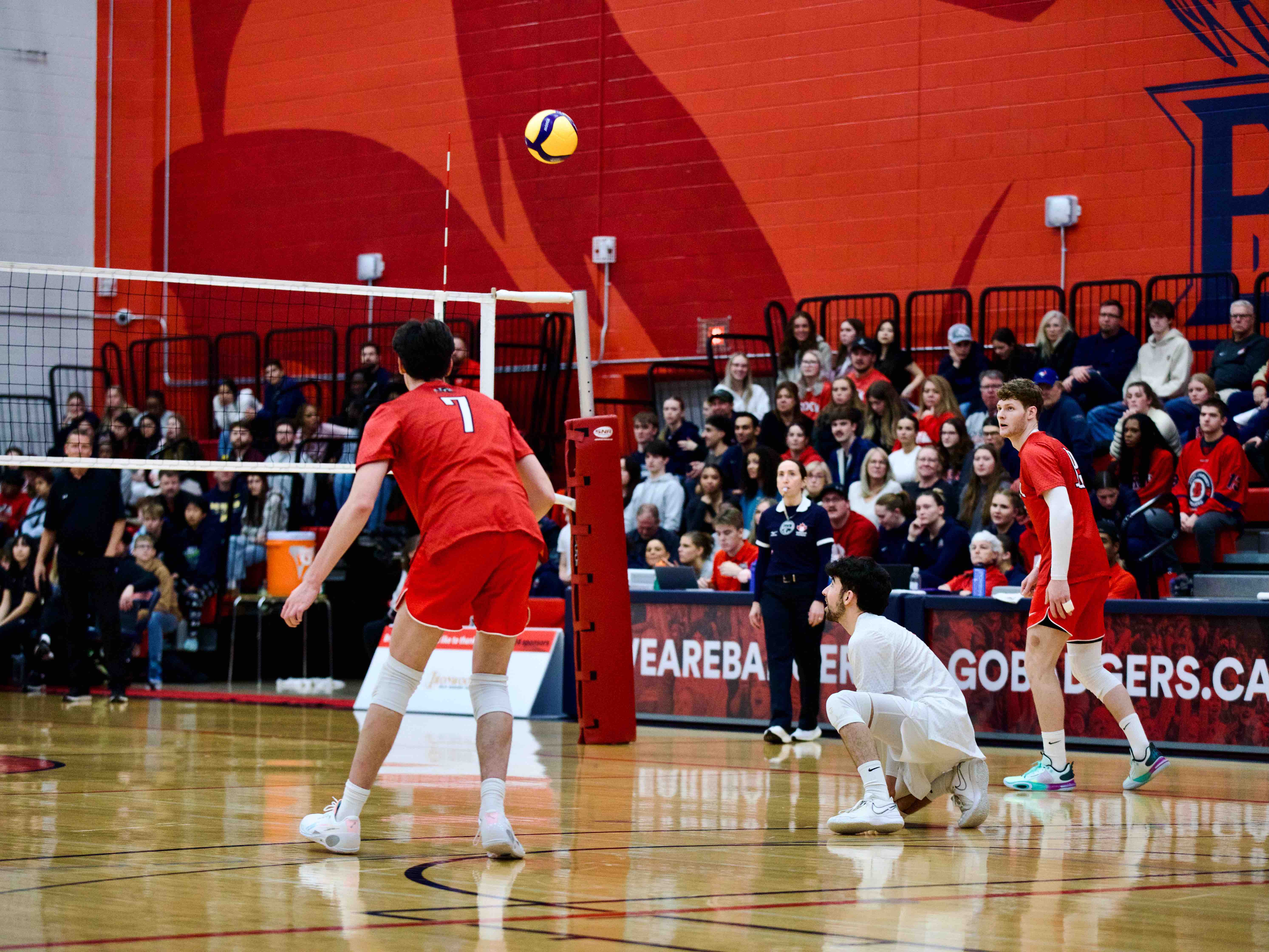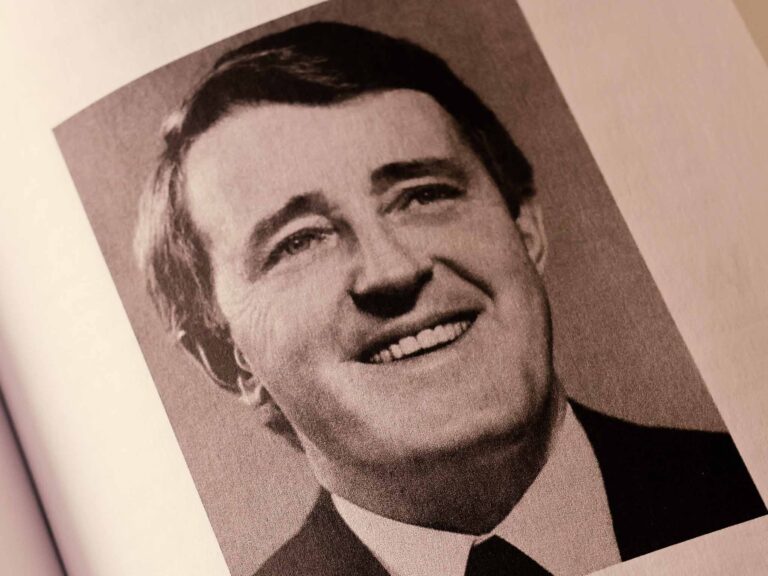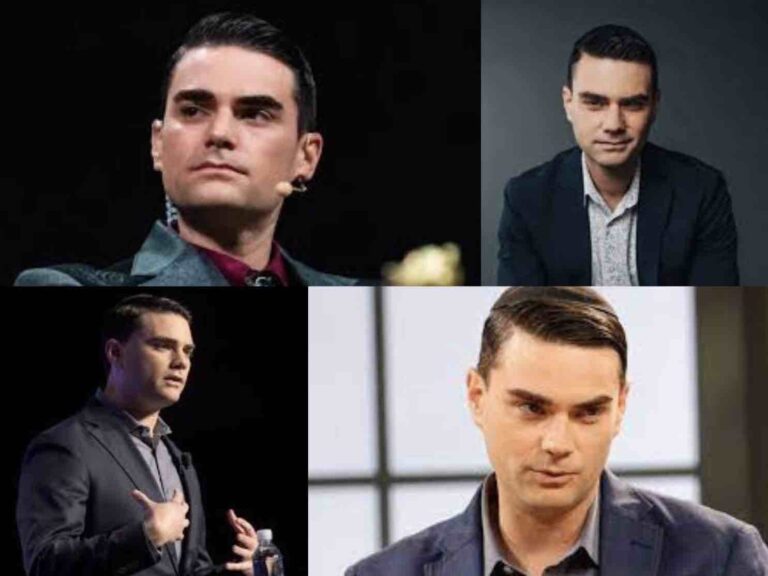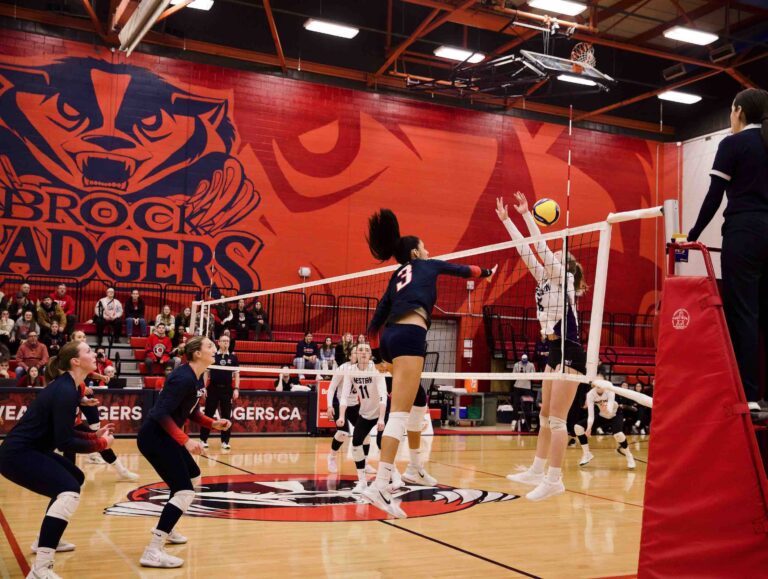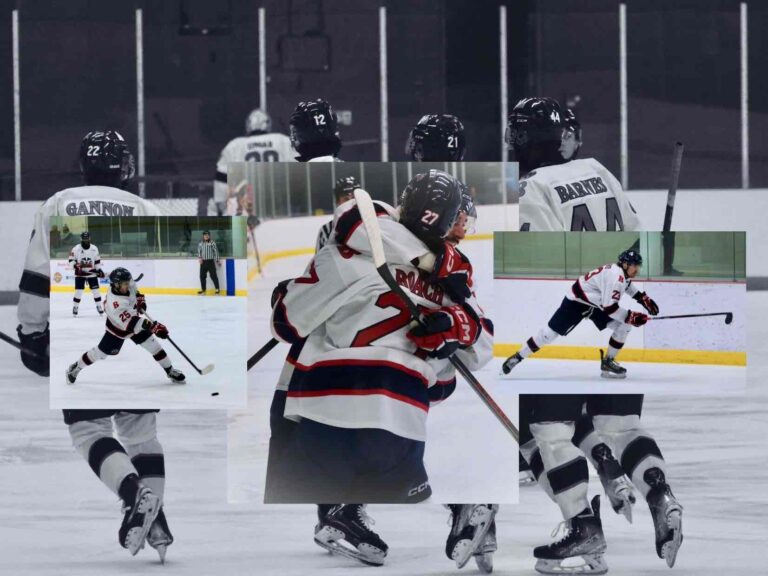By: Tomas Morgan & Luke Sweeney
In an event that’s usually a bit of a snooze-fest, this year’s NHL trade deadline was packed with big trades and acquisitions—even if they were mostly for one team.
After an interesting deadline, Tomas and Luke will break down some of this year’s biggest moves as well as the winners and losers of the trade deadline.
February 28th: Chris Tanev to the Stars
With the deadline still over a week away, the Stars got to work early picking up defenceman Chris Tanev from the Calgary Flames, widely expected to be one of this year’s hottest commodities. The Flames received prospect Artem Grushnikov, a second-round pick this year and a conditional third-round pick in 2026. The New Jersey Devils also picked up a fourth-round pick from the stars in order to retain a portion of Tanev’s salary.
Luke: Stars defenceman Thomas Harley has been a revelation since moving to the top pairing alongside Miro Heiskanen, and while the two form a formidable duo, it left the Stars’ bottom pairs weakened. Tanev has for quite some time been among the best defensive players in the NHL, though at 35-years-old and with injury issues in recent years, it’s worth questioning how well he’ll hold up in a long playoff run. Nevertheless, the acquisition cost is fairly low for the quality of play he can provide when healthy.
Tomas: The Dallas Stars were easily a top five team in the league before the acquisition of Tanev. Adding Tanev to their D-core gives LHD Essa Lindel a veteran stay at home defenseman to play with and allows for, almost 40-year-old, Ryan Suter to move down to the bottom pairing alongside Jani Hakanpaa. At a low cost this trade allowed Dallas to balance out their weakest part of the line up in hopes of a long playoff run.
March. 5th: Anthony Mantha to Vegas
The Vegas Golden Knights made their first move of what would prove to be a busy trade deadline, picking up forward for a second-round pick this year and a fourth in 2026.
Luke: Though Mantha’s play has been up-and-down in recent years, he should be able to offer significant value insulated in a bottom-six role for a Vegas forward corps that is shaping up to be very deep. Mantha’s performed well in such a role with Washington this year and fits the profile of players Vegas seems to covet. Though not super physical, Mantha’s big, fast, has a capable scoring touch, and could conceivably play higher in the lineup in the event of injuries.
Tomas: Mantha is not the flashiest of players and will often go many games in a row where you don’t even think he’s playing. But as Luke mentioned, he has performed well in Washington this year and when he gets hot, he has a lethal shot that any team would want to play in their bottom 6. This addition by Vegas signaled to all in the organization and around the NHL that they would be all-in again. It will be interesting to see how Mantha’s game adjusts in playoffs – if Vegas gets in – but with someone of his stature, if he wants to, he should have no trouble with the extra physicality come playoff time.
March 6th: Vladimir Tarasenko to the Panthers
After Ottawa Senators fans whined all season about Tarasenko being able to fetch a first-round pick at the deadline, the former 40-goal scorer was shipped off to Florida for a modest acquisition cost of a fourth and a fifth-round pick.
Luke: Long gone are the days of stardom for Tarasenko, but in the right situation, he can still easily offer value as a low-calorie goal scorer, despite being one of the worst defensive players in the league. Florida certainly seems to fit the bill. They play a fast, heavy forechecking game that should give Tarasenko plenty of opportunities to use his skill to find looks as the third forward. Florida also has a plethora of defensively-sound, workmanlike forwards who can shelter the team from his gaffs.
Tomas: Tarasenko did not live up to expectations in Ottawa just like the rest of the team this season. A lot of fans were hoping he would return to prime Tarasenko from playing a full year on a young, fast, Senators team but that did not happen. He managed 41 points in 57 games with Senators playing in a middle six role. When he was given the chance to waive his no-move clause (NMC) to go to Florida, he did not hesitate, as that is where his wife and kids are located. Florida is arguably the scariest team in the league and adding a pure goal scorer in Tarasenko to the bottom 6 makes them even more of a threat.
March 6th: Sean Walker to the Avalanche:
The Avs made their first trade of the day by acquiring defenceman Sean Walker and a fifth-round pick from the Philadelphia Flyers in exchange for Ryan Johansen and a 2025 first-round pick.
Luke: Walker has played exceptionally well in Philly this year, meshing perfectly into coach John Tortorella’s aggressive rush tactics. He should fit in equally well into Colorado’s system (especially in a smaller role), provide a more defensive lean to their D-corps, and make other players expendable. The cost was expensive, but also market-value for a top-four defenceman. More than that, the deal is massive for the Flyers. Walker was acquired a year ago as a smaller piece in a deal along with a second-round pick, Cal Peterson and Helge Grans, making the initial trade all the sweeter.
Tomas: Walker is not the flashiest name but at this year’s trade deadline he was highly coveted which is why Philly was able to fetch a first-round pick. Walker, like Tanev, balances out Colorado’s blueline allowing for Josh Manson to play on the third pair and giving Samuel Girard a better puck mover to play with. This will allow Colorado to attack its opposition with its second defensive pair like how they deploy Toews and Makar.
March 6th: Edmonton Acquires Adam Henrique and Sam Carrick
The Oilers trade for Adam Henrique, Sam Carrick, Ty Taylor and a 7th-round draft pick, sending a first-round pick and a conditional fifth to Anaheim. The Oilers also sent a fourth to Tampa Bay to retain a portion of Henrique salary.
Luke: For the cost, this was a poor trade for the Oilers. Henrique is a capable middle-six forward, but based on the market this year, the players available, and how much other, arguably superior players went for, this makes little sense.
Tomas: I agree with Luke on this. Adam Henrique is having a career year – on pace for 57 points – at age 34 and it’s obvious why. Playing on the Anaheim Ducks, he was deployed in almost every situation and played 17:32 a night, his second most on average since 2017-18. His production will likely drop off as he is projected to play in the bottom 6 in Edmonton. The Oilers would’ve been better off acquiring Anthony Mantha for a lesser price.
March 6th: Colorado exchange Bowen Byram and Casey Mittlestadt
Luke: One-for-one trades are always interesting. I definitely like this trade for Colorado. Mittlestadt has quietly been one of the NHL’s premier playmakers over the past two years and led the Sabers in scoring upon his departure. The Avalanche have desperately lacked secondary scoring since Kadri’s departure and Landeskog’s injury. Mittlestadt should provide some security here as well as possibly help raise Val Nichushkin’s game, who has been prolific on the powerplay but had less scoring success at even strength.
In my view, things are much less certain for the Sabers. Byram was a highly touted defence prospect, but his development has stagnated in Colorado, in part due to finding himself stuck behind Cale Makar, Devon Toews and—to an extent—Sam Girard in the depth chart, but also largely due to extensive concussion issues. While Buffalo offers a fresh start and perhaps more opportunity, I worry that some of the issues may persist. Byram has played quite poorly recently and, if injury related, that’s not an issue that can totally be fixed. As well, Buffalo also has a depth chart crowded with young, talented defencemen in Rasmus Dahlin and Owen Power, who also, like Byram, both shoot left. While he’s entering a lower-stakes situation with more leeway, there’s the unfortunate possibility that he may not have much room to grow.
Tomas: In my eyes this is a fair trade for both sides. Colorado have been looking for a second line center ever since the start of the season when Ryan Johansson did not work out in that role. Byram, as Luke mentioned, has been stuck playing limited minutes for the Avalanche and a change of scenery could help him blossom into the player he was projected to be, when picked 4th overall in 2019. Byram is also friends with many of Buffalo’s young players including Devon Levi, Peyton Krebs, Dylan Cozens and Jack Quinn as they played together at the 2020 and 2021 world junior championship. Adding Byram to a familiar core of young players that have all played together could be a recipe for success, which the Sabers have been lacking for the past 20 years.
March 6th: Vegas Lands Hanifin from Calgary
Vegas netted another big fish sending a first-round pick in 2025, defenseman Daniil Miromanov, and a conditional third-round pick 2025 to Calgary for defenceman Noah Hanifin. Philadelphia also picked up a fifth-round pick to retain some of Hanifin’s salary.
Luke: Hanifin was the biggest name moved to this point and bolsters an already impressive Vegas blueline. With rumors of an extension looming, it also seems unlikely that they’ll have to make another move here for the foreseeable future. Though Hanifin is solid-not-spectacular and likely out of his depth as a No.1 in Calgary, it feels like that Flames should have been able to bring in more for one of the top players on the market. Vegas is one of the top teams in the league, making their first not very valuable. Daniil Miromanov—only sixth months younger than Hanifin—is not really a prospect either.
Tomas: The price for Noah Hanifin before this trade was made was rumored to be astronomical. It was also rumored that Tampa Bay was going to be the team getting him as he wanted to go south to Florida. When he was traded to Vegas and at the price it ended up being, it honestly shook the hockey world. How could Vegas add another all-star defenseman to an already stacked blueline and not send one of Nicholas Hague or Brayden McNabb the other way? Noah Hanifin is Vegas’ 3rd or 4th defenseman behind Alex Pietrangelo, Shea Theordore and maybe Alec Martinez, depending on how much Bruce Cassidy trusts Hanifin. If they make playoffs, Vegas has the best team on paper by far.
March 7th: Toronto Acquires Joel Edmundson from Washington
Tomas: When you think Joel Edmundson, you think big, tough, cross checks and there is a reason for that. That is all he has going for him. Edmundson was playing on the bottom pairing of a struggling Washington Capitals team before being acquired by the Toronto Maple Leafs for a 3rd and 5th round pick. Edmundson is not the player he once was in St. Louis or Montreal and has little to no positive impact on the game when it is played beyond the front of his net. A questionable move by first year general manager Brad Treliving, to say the least.
Luke: Edmunson is good at being a thug, not so much at being a hockey player. The acquisition price is laughably high for a 30-year-old player of his caliber.
March 7th: Yakov Trenin to Colorado for prospects and pick
Tomas: Yakov Trenin is your stereotypical trade deadline add. It seems like a handful of players like Trenin get dealt at each deadline. Trenin is a bottom six forward who is solid defensively but if put in the right situation can thrive in the offensive zone. Trenin was one of the many bright spots on the Nashville Predators this season, scoring ten goals and adding four assists while getting no powerplay time and playing 15 minutes a night in a checking role. Trenin will slide into Colorado’s line up nicely on the right wing playing with Ross Colton and Miles Wood in a checking role. Solid addition to an already great Avalanche squad.
Luke: While Trenin’s numbers don’t jump off the page, he’s performed well in a depth role in Nashville, and should continue to do so (or even elevate his play) with a better team around him in Colorado. Among players who have played above 400 minutes at five-on-five, Trenin averages 6.85 shots per 60 minutes (slightly ahead of stars like Tim Stuetzle, Sam Reinhart, Brayden Point and Quentin Byfield) while generating a very solid 0.84 ixG/60 on those attempts. Trenin is also 41st in the league in Hits/60. In short, Trenin’s demonstrated his ability to generate lots of high-quality shots and play physically in limited ice-time, a perfect fit for Colorado’s bottom-six.
March 7th: Carolina wins the Jake Guentzel sweepstakes
The Carolina Hurricanes acquired forward Jake Guentzel and defenseman Ty Smith from the Pittsburgh Penguins in exchange for Michael Bunting, prospects Vasily Ponomarev, Ville Koivunen, Cruz Lucius, a conditional first-round pick in 2024 and a conditional fifth-round pick in 2024.
Luke: Guentzel was probably the best player available at this year’s deadline and the Canes did well to snap him up without giving up any of their top prospects. Carolina has been looking to add a high-end scoring forward through the trade market for a long time and that’s exactly what Guentzel brings. He creates shots and scoring chances at some of the highest rates in the league and is 23rd in the league in goals over the last three years. On Pittsburgh’s end, this is a little disappointing though not a total failure. Bunting was a poor fit in Carolina but could conceivably play very well next to Crosby should they decide to slot him there, softening the initial blow. The Penguins opted for more of a “quantity-over-quality” approach with the other returning assets. Ponomarev is a solid prospect who could factor into their lineup as soon as this year, though likely in a bottom-six role long term. Koivunen is another solid prospect—playing at a near point-per-game pace in Finland’s top league—but again projects as complimentary middle-six winger with skill and smarts. Lucius is the most interesting as a highly skilled player who will likely struggle to find a role or production in the NHL.
Tomas: I agree with Luke’s analysis on this trade as well. Guentzel has been a top goal scorer in the league for many years now playing alongside Sidney Crosby. The one question that I still ask myself is “will Guentzel produce as much away from Sidney Crosby”? Crosby is one of the greatest players of all time and arguably the second best playmaker of all time. Guentzel benefited from playing on his line for many years and I wonder if the transition to playing in Carolina’s system will be a bit of a bumpy one.
March 8th: Winnipeg Jets acquire Tyler Toffoli
The Jets netted Tyler Toffoli from the New Jersey Devils, giving up a third this year and a second in 2025.
Luke: Despite curious lineup decisions playing a large role in this, the Jets have been searching for another top-six forward and found a low-risk option in Toffoli for a modest price. Toffoli has bounced around from team to team over the last few years with varying levels of success. More of a cerebral, position scorer than a burner and a sniper, Toffoli struggled in New Jersey’s high-pace, rush-heavy offence but is a good bet to bounce back in Rick Bowness’ system in Winnipeg.
Tomas: Toffoli is a great addition for the Jets. At the cost of just a 2nd and 3rd round pick he will most likely slot onto Winnipeg’s second line alongside Nikolaj Ehlers and Sean Monahan. Toffoli is familiar with Monahan’s play as they played alongside each other in Calgary back in 2021-22. The Jets are hoping that chemistry can be reignited as when on a line together, Toffoli scored at nearly a point per game pace.
March 8th: Vegas lands Tomas Hertl via San Jose
The Knights picked up Tomas Hertl along with two third-round picks from the Sharks for prospect David Edstrom and a first in 2025. The Sharks also retained 17% of Hertl’s salary for the next seven years.
Luke: This is a coup for Vegas and a catastrophic failure for the Sharks. The Sharks had the option to trade Hertl at 2022’s deadline as a pending UFA garnering a ton of interest around the league. Instead, they signed him to an expensive eight-year deal. Hertl’s large contract undoubtedly lowered the price the Sharks could ask for realistically the only valuable trade chip remaining on their otherwise pathetic roster. Even so, the price was much too low. Edstrom is a solid prospect, but projects more as a two-way middle-six player rather than a key piece of San Jose’s rebuild. Barring an unprecedented failure, Vegas should expect to be a contender next year as well, making the first-round pick a less valuable asset. They also gave up two third-round picks which is simply non-sensical given how much of a sweetheart deal this already is for Vegas. The Sharks have also now used all three of their salary retention spots for the next three years making future trades more difficult and third-party retention impossible. On a personal level, the Sharks locker-room is apparently devastated by the loss. The Sharks’ Mike Grier is quickly making an impression as one of the worst GMs in the NHL.
Tomas: Tomas Hertl, being dealt minutes before the trade deadline was set to be over on March 8, is one of the craziest trades many of us have seen as fans. Not only was it a suprise that a player with that much term got dealt with but it was to the Vegas Golden Knights. Vegas had already acquired two of the biggest players up this time and adding a third, who to all media members accounts, was not even available, is a tidy job by Vegas general manager Kelly McCrimmon. Hertl will most likely return day one of playoffs alongside star winger Mark Stone, putting Vegas over the salary cap for the third consecutive year in playoffs. If this Vegas team is ever fully healthy, it may be the best team we have seen – on paper – in quite some time. They will be a force to be wrecking with in playoffs.
Trade Deadline Winners:
Vegas Golden Knights: Luke: In Hanifin and Hertl, Vegas added likely two of the four best players at the deadline and traded for a solid piece in Mantha as well. Considering the low acquisition cost, this deadline was huge for the Knights and their Cup chances.
Colorado Avalanche: Luke: Similar to Vegas, the Avs added two very functional pieces this deadline. While the price was arguably higher, Mittlestadt and Walker addressed two important needs and gave away Byram, a struggling young player in need of a change of scenery.
Carolina Hurricanes: Tomas: The Carolina Hurricanes have struggled to get over the hump the last three years making the Eastern Conference finals in all three and getting swept in all three years. The addition of Jake Guentzel finally moves away from the old philosophies of management that would only acquire players with term left on their contracts and shows the Hurricane players and fans that they are committed to winning now. They also managed to keep all their top prospects while acquiring Guentzel who inserts himself into the lineup as arguably their number one option offensively. The Hurricanes also managed to pick up Kuznetsov for just a third-round pick which is quite the low risk, high reward trade.
Trade Deadline Losers:
San Jose Sharks: The Sharks parted with one of the deadline’s top players (in addition to mysteriously tacking on two third-round picks) while only acquiring two low-ceiling assets, a future first and Edstrom, who projects more as a middle-of-the-lineup forward. More importantly, retaining Hertl’s salary leaves them without a salary retention slot for three years, a critical blow for a rebuilding team with little hope on the horizon.
Edmonton Oilers: Tomas: Ken Holland continues to prove that he is not good at his job by adding Adam Henrique, Sam Carrick and Troy Stetcher to the Oilers line up. The assets traded for these three players could have been pooled and traded for one great offensive player to round out the Oilers top 6. Instead the Oilers are now relying on Adam Henrique to be the offensive juggernaut that he is not. Sam Carrick and Troy Stetcher are also replacement level players and thus do not move the needle on the blueline.
Toronto Maple Leafs: Tomas: Like Edmonton’s General Manager, Toronto’s is not much better, if not he is probably worse. In a record-breaking year for Auston Matthews and William Nylander, Treliving added a fourth line centre, and two 7th defensemen. None of the players brought in are upgrades from what the Maple Leafs already have and instead players such as Joel Edmundson and Ilya Lyubushkin, may end up taking Timothy Liljegren and Simon Benoit spot in the lineup, who both have been the leafs most reliable defenseman this year.

